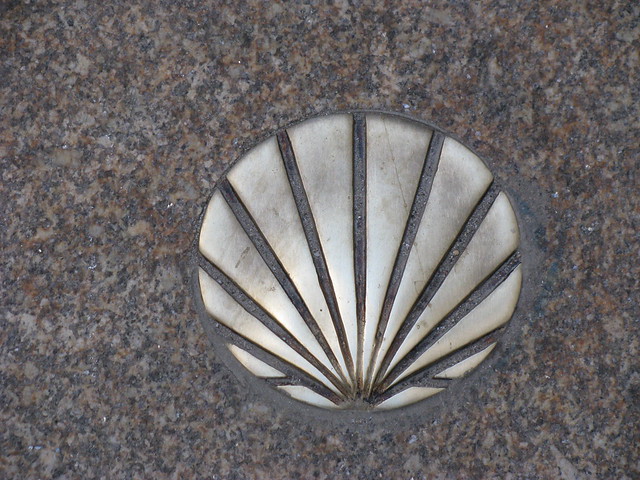 A very traditional Spanish game is called the hankerchief game. Someone holds the "pañuelo" between two evenly divided teams. The holder calls out a number and the numbered person on each side has to respond quickly, run and grab the "pañuelo" and run back to their side before being tagged. We saw this being played on the beach, and the teenagers were having a blast. There is an endless number of variations on this game, and Begoña uses it with relative clauses that call for subjunctive. Another game to use as a warm up is called "a mi derecha," where a student who has a vacant desk to his/her right uses a relative clause and subjunctive to see who stands up and sits in that empty chair. The new student who has an empty chair on the right does the same until everyone has gone. Example: I am looking for someone who has a birthday in June. This requires subjunctive in Spanish, and if it's your birthday month you get up and sit on the speaker's right. We can all adapt this game in some form. Begoña pushes forward in the book, and tomorrow we get to do more subjunctive. Yippee!
A very traditional Spanish game is called the hankerchief game. Someone holds the "pañuelo" between two evenly divided teams. The holder calls out a number and the numbered person on each side has to respond quickly, run and grab the "pañuelo" and run back to their side before being tagged. We saw this being played on the beach, and the teenagers were having a blast. There is an endless number of variations on this game, and Begoña uses it with relative clauses that call for subjunctive. Another game to use as a warm up is called "a mi derecha," where a student who has a vacant desk to his/her right uses a relative clause and subjunctive to see who stands up and sits in that empty chair. The new student who has an empty chair on the right does the same until everyone has gone. Example: I am looking for someone who has a birthday in June. This requires subjunctive in Spanish, and if it's your birthday month you get up and sit on the speaker's right. We can all adapt this game in some form. Begoña pushes forward in the book, and tomorrow we get to do more subjunctive. Yippee! Francisco focuses on the use of comics, graphic novels and literature in general for his teaching. Since he is a literature expert, he finds this to be a dynamic way to constantly teach culture and language at the same time while exposing students to some of the finest writers in castellano.
 Spaniards have a rich literary tradition growing out of newspapers, and therefore, the comics have perhaps played a bigger role than in American culture. Just like Peanuts was a comic before it debuted on t.v. so too have many Spanish comics evolved. He gives us some good tips on how to use them in class, and we learn that the bubbles that hold the speech are called "bocadillos." I asked what we called them in English, and "bubbles" seems right, but please comment if you know better. Maddy suggested we check out http://www.toondoo.com/ for more comic ideas.
Spaniards have a rich literary tradition growing out of newspapers, and therefore, the comics have perhaps played a bigger role than in American culture. Just like Peanuts was a comic before it debuted on t.v. so too have many Spanish comics evolved. He gives us some good tips on how to use them in class, and we learn that the bubbles that hold the speech are called "bocadillos." I asked what we called them in English, and "bubbles" seems right, but please comment if you know better. Maddy suggested we check out http://www.toondoo.com/ for more comic ideas. Royalty in Spain seems like it could be a summer course of its own, what with all the drama surrounding these European families that have defined so much of this continent's ancient and current cultural landscape. Ana talks about "La ley sálica " known in English as the Salic Law of Succession. This was included in the 1978 Spanish Constitution, and in short, it does not allow a women to become Queen if she has a brother. Spain is a Parlimentary Monarchy, and you can read about King Juan Carlos and his family until you are blue in the face. Ana highlights some of the unwritten agreements that exist between the press (paparazzi) and the Monarchy, which contrasts in interesting ways with other European royal families. The transition between the Franco dictatorship and the constitutional monarchy took up the whole class today.
 King Juan Carlos I and Queen Sofia
King Juan Carlos I and Queen Sofia












 To transition from the heavy stuff, Francisco shows us part of a more light-hearted film from yesterday's class called, "
To transition from the heavy stuff, Francisco shows us part of a more light-hearted film from yesterday's class called, "

















